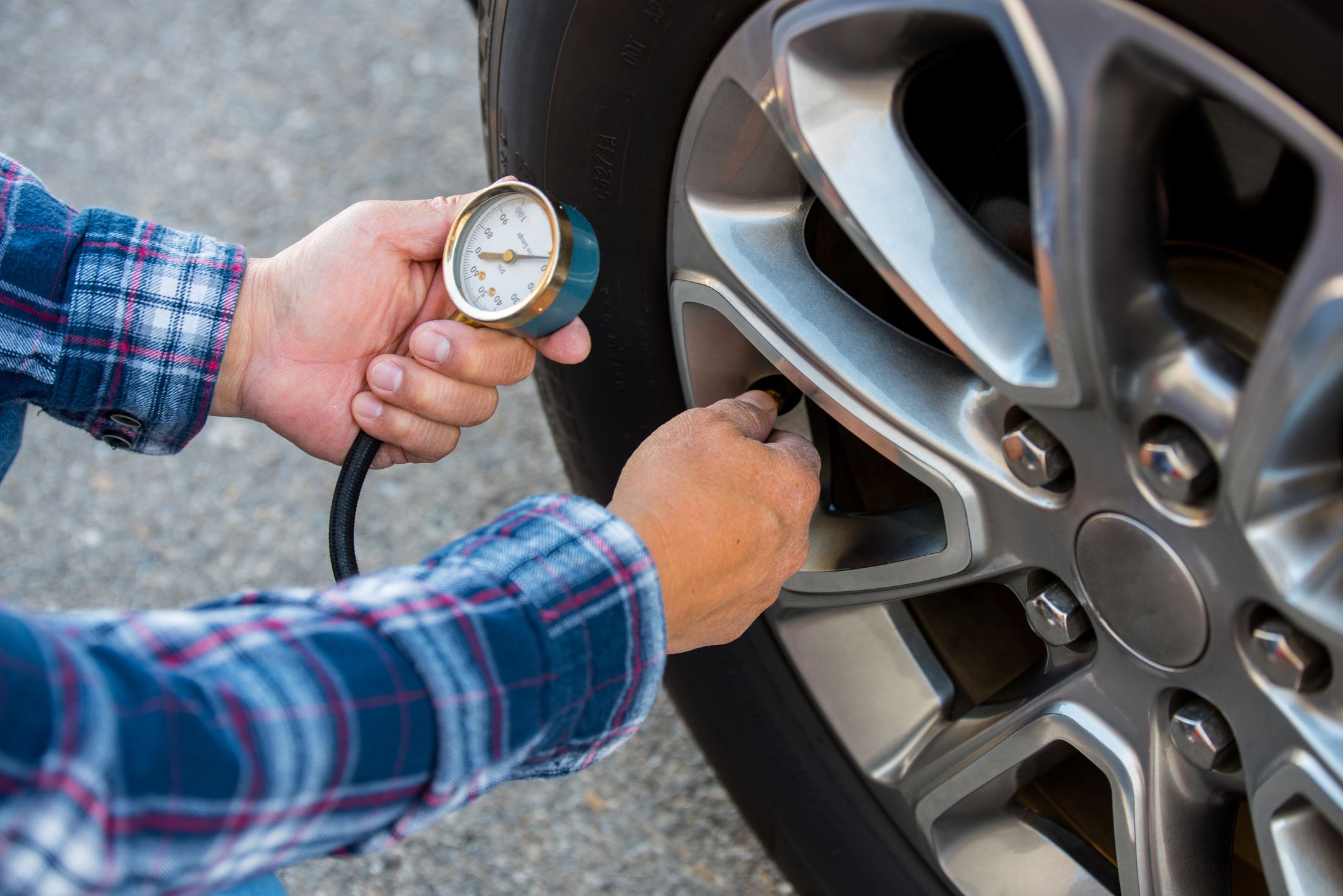Proper car tire pressure is key to a safe and smooth ride. Properly inflated tires will help keep your vehicle in good working order and give you a longer tire life. Learn how to check and adjust your tire pressure for the best performance.

It is important to properly inflate your car tires with changing seasons and tire wear. Not having the right air in your tires can be dangerous – and costly. But not knowing how to inflate your tires properly can also lead to improperly inflated tires, which can be hazardous.
The Basics of Car Tire Pressure
A car’s tires must be inflated correctly to achieve the best gas mileage, handling, and braking. The recommended tire pressure is usually found on a sticker inside the driver’s side door frame or in the car’s manual. If you cannot see this information, use the vehicle’s built-in tire pressure monitoring system (TPMS) to determine recommended tire pressure. When driving with different tires, it is essential to understand their design and performance. There are three basic categories of tires: bias-belted, bias-radial, and bias-ply.
How to Check Tire Pressure
Tire pressure is an essential factor in the overall performance of your car. Improper inflation can lead to decreased fuel economy, premature tire wear, and even a blowout. Checking your tire pressure regularly is easy to ensure your tires are inflated to the correct pressure. There are a few different ways to check your tire pressure. One way is to use a pressure gauge. You can buy a pressure gauge at most auto stores.
Causes of Low Tire Pressure
There are a few common causes of low tire pressure: a leak in the tire, a leak in the valve stem, a puncture in the tire, or a foreign object stuck in the tire. The most common problem with tire pressure is a leak in the tire. If you notice a small leak, it’s best to check the tires out at a shop where they can check for a slow leak and inflate the tire properly. The technician can also tell you if your tires are under-inflated or over-inflated. It’s essential to keep an eye on the air pressure in your car’s tires to make sure you are getting proper wear and traction on your tires.
Tire Pressure and Safety
Tire pressure is essential for safety because it determines how well the tires grip the road. Low tire pressure can cause the tires to overheat and blow out. This could result in a crash or a deadly skid. When you buy new tires, the pressure should be the minimum psi (pounds per square inch) listed on the tire’s sidewall. Based on the vehicle’s load-rating label, this is the recommended inflation pressure for that tire size.
Tire tread wear is most important when driving in snowy or icy conditions. If snow and ice are pushing up against the edges of your tires, it can damage the sidewalls and affect their safety and gas mileage. You should check the tread depth at least every six months or after every winter season.
Tire Pressure Sensor Replacement
If your car’s tire pressure sensor is broken, you must replace it. The process is not complicated, but it can be a bit time-consuming. You will need to remove the old sensor and install the new one. Remove the broken sensor and replace it with a fresh one. Start by dragging the old sensor held in place with two screws.
Four screws hold the camera’s bottom plate, so note their positions when you remove the sensor. Once the old sensor has been removed, you can swap out the new one. As shown above, you must insert the new magnet into the camera from the bottom.
Tire Pressure and Temperature
As the temperature of a tire increases, the air pressure inside the tire also increases. Similarly, when the temperature of a tire decreases, the air pressure inside the tire also decreases. Suppose a pressure monitoring system is incorporated into a tire designed to monitor tire pressure. In that case, it can detect any decrease in pressure within the tire caused by a cold outside temperature. Most cars and trucks with air conditioning have tire pressure monitors built into their wheel hubs.
Effects of Improper Tire Pressure on Your Car
If your car’s tires are not inflated to the proper pressure, it can lead to several problems. For example, under-inflated tires can cause the vehicle to overheat, leading to severe engine damage. Additionally, under-inflated tires can also cause poor handling and decreased fuel economy.
Things you should keep in your Mind
- What are the consequences of under-inflated tires?
- How can you tell if your tires are inflated to the proper pressure?
- Why is it important to inflate your tires to the proper pressure?
- What are some signs that your car’s engine is overheating?
- How can you decrease the risk of your car overheating?
- What are some ways to improve your car’s fuel economy?
Tips for Adjusting Tire Pressure
Remember a few things to remember when adjusting your tire pressure. First, make sure you have the right tools for the job. A pressure gauge is essential, as is a pump or air compressor. Second, constantly adjust your pressure when the tires are cold. Finally, be careful not to overinflate your tires. Warmed-up tires will give you a false reading.
Conclusion
Maintaining the correct tire pressure is one of the most important things you can do for your car. You can ensure good handling, better fuel economy, and longer tire life by keeping your tires properly inflated. Under-inflated tires can decrease fuel economy, rapid tread wear, and an increased blowout. Conversely, over-inflated tires can lead to a harsher ride, reduced traction, and premature wear.











